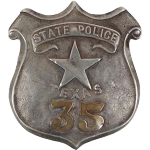
The Texas Ranger Division, also known as the Texas Rangers and nicknamed the Diablos Tejanos, is an investigative law enforcement agency with statewide jurisdiction in the U.S. state of Texas, based in the capital city Austin. In the time since its creation, the Texas Rangers have investigated crimes ranging from murder to political corruption, acted in riot control and as detectives, protected the governor of Texas, tracked down fugitives, served as a security force at important state locations, including the Alamo, and functioned as a paramilitary force at the service of both the Republic (1836–1846) and the State of Texas.
George Scarborough was a cowboy and lawman who lived during the time of the Wild West. He is best known for having killed outlaw John Selman, killer of John Wesley Hardin, and for his partnership with lawman Jeff Milton, with the pair bringing down several outlaws during their time together.
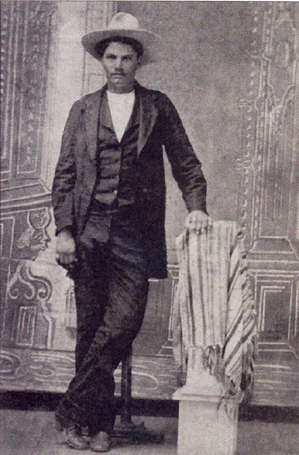
John Wesley Hardin was an American Old West outlaw, gunfighter, and controversial folk icon. Hardin often got into trouble with the law from an early age. He killed his first man at the age of 15, claiming he did so in self-defense.

William Preston Longley, also known as Wild Bill Longley, was an American Old West outlaw and gunfighter noted for his ruthless nature, speed with a gun, quick temper, and unpredictable demeanor. He is considered to have been one of the deadliest gunfighters in the Old West.

Leander Harvey McNelly was a Confederate officer and Texas Ranger captain. McNelly is best remembered for leading the "Special Force", a quasi-military branch of the Texas Rangers that operated in south Texas in 1875–76.
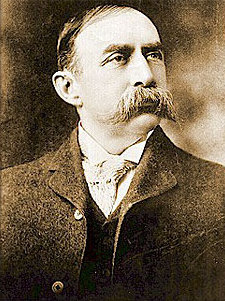
John Barclay Armstrong was a Texas Ranger lieutenant and a United States Marshal. He is usually remembered for his role in the pursuit and capture of the famous gunfighter John Wesley Hardin.
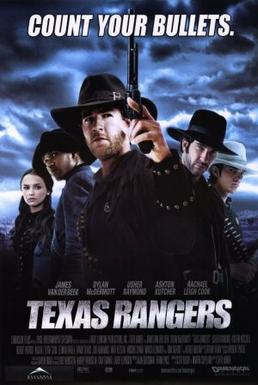
Texas Rangers is a 2001 American action Western film directed by Steve Miner and starring James Van Der Beek, Ashton Kutcher, Alfred Molina, and Dylan McDermott. It follows a group of Texas Rangers in the post-American Civil War era. The film is very loosely based upon the book Taming the Nueces Strip by George Durham, who based it on his own experiences serving in Captain Leander McNelly's Texas Ranger group as a young man. The film was panned by critics and was a box office bomb.
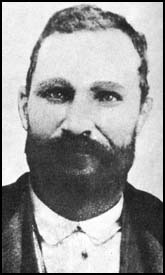
John Henry Selman was sometimes identified as an outlaw and sometimes a working lawman of the Old West. He is best known as the man who fatally shot John Wesley Hardin in the Acme Saloon in El Paso, Texas, on August 19, 1895.

Ben Thompson was a gunman, gambler, and sometimes lawman of the Old West. He was a contemporary of "Buffalo" Bill Cody, Bat Masterson, John Wesley Hardin, and "Wild Bill" Hickok, some of whom considered him a friend, others an enemy. Thompson fought for the Confederacy during the Civil War, and later for Emperor Maximilian in Mexico. After he was hired in 1881 as marshal in Austin, Texas, the crime rate reportedly dropped sharply. Thompson was murdered at the age of 40 in San Antonio, Texas, in the "Vaudeville Theater Ambush."
The Horrell brothers, sometimes referred to as the lawless Horrell boys, were five brothers from the Horrell family of Lampasas County, Texas, who were outlaws of the Old West, and who committed numerous murders over a five-year period before four of the brothers were killed in different incidents. The brothers are probably best known for the Horrell-Higgins feud, although it resulted in relatively few deaths compared to other feuds. However, starting in 1873, the brothers went on an ethnically motivated killing spree during which they killed a Hispanic lawman and a white lawman in New Mexico, killed 11 other Hispanic men, and wounded one Hispanic woman. The brothers had previously killed five lawmen in Texas.
John Riley Duncan was a Texas lawman with service as a Dallas police officer, Texas Ranger, and detective. He is most well known for his significant contributions to the capture of John Wesley Hardin.
The origins of today's Texas Ranger Division trace back to the first days of Anglo-American settlement of what is today the State of Texas, when it was part of the Province of Coahuila y Tejas belonging to the newly independent country of Mexico. The unique characteristics that the Rangers adopted during the force's formative years and that give the division its heritage today—characteristics for which the Texas Rangers would become world-renowned—have been accounted for by the nature of the Rangers' duties, which was to protect a thinly populated frontier against protracted hostilities, first with Plains Natives tribes, and after the Texas Revolution, hostilities with Mexico.

Feuds in the United States deals with the phenomena of historic blood feuding in the United States. These feuds have been numerous and some became quite vicious. Often, a conflict which may have started out as a rivalry between two individuals or families became further escalated into a clan-wide feud or a range war, involving dozens—or even hundreds—of participants. Below are listed some of the most notable blood feuds in United States history, most of which occurred in the Old West.

The Barker–Karpis Gang was one of the longest-lived criminal gangs during the Depression Era, spanning from 1931 to 1935. The gang was founded by Fred Barker and Alvin Karpis, and later joined by Fred's brother Arthur "Doc" Barker. Along with the three core members, the gang's network spanned up to 25 members at one point.
Wyatt Outlaw was an American politician and the first African-American to serve as Town Commissioner and Constable of the town of Graham, North Carolina. He was lynched by the White Brotherhood, a branch of the Ku Klux Klan on February 26, 1870. His death, along with the assassination of white Republican State Senator John W. Stephens at the Caswell County Courthouse, provoked Governor William Woods Holden to declare martial law in Alamance and Caswell Counties, resulting in the Kirk-Holden War of 1870.

The Sutton–Taylor feud began as a county law enforcement issue between relatives of a Texas state law agent, Creed Taylor, and a local law enforcement officer, William Sutton, in DeWitt County, Texas. The feud cost at least 35 lives and eventually included the outlaw John Wesley Hardin as one of its participants. It began in March 1868, not reaching its conclusion until the Texas Rangers put a stop to the fighting in December 1876.
The Texas Special Police were formed, along with the Texas State Police, during the Reconstruction Era administration of Texas. to combat crime statewide in Texas.
John Jackson Helm, was a lawman, cowboy, gunfighter, and inventor in the American Old West. He fought for the Confederacy during the Civil War, but worked as a lawman for the Union during Reconstruction. He was an active participant in the Sutton–Taylor feud in and about Dewitt County, Texas; and was killed in an ambush related to the feud and perpetrated by Jim Taylor and John Wesley Hardin.
Albuquerque was a settlement established in 1857 by Samuel McCracken and Henry Hastings in what they thought was Wilson County. Its population grew, and following the Civil War, the town boasted a mercantile store, saloon, blacksmith shop, cotton gin, and an elementary school. Its U.S. post office opened in 1870. Albuquerque, which was actually found to be in Gonzales County, is today a ghost town.
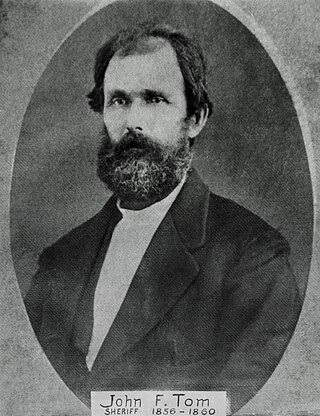
John Files Tom, a descendant of Irish immigrants moved as a boy with his family from Tennessee to Texas to impact Texas history with his involvement in many key roles that shaped Texas including but not limited to: Texas Revolutionary War Veteran, Sheriff of Guadalupe County, Texas, Texas Ranger Captain during the Civil War and a Representative in the 13th Texas State Legislature, was born on April 22, 1818, in Cathey's Creek in Maury County, Tennessee to William Tom and Mary Susan Files Tom.
